
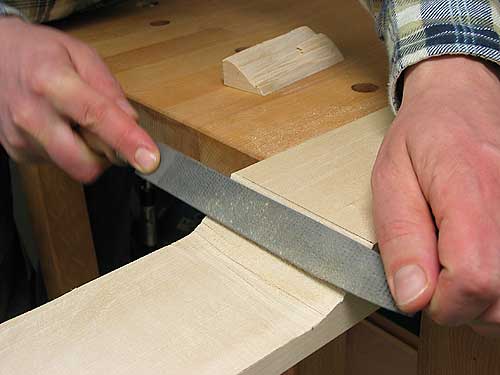
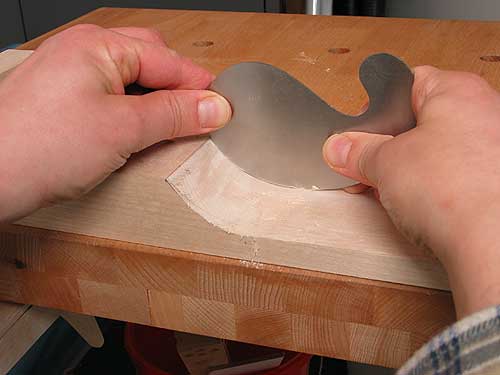
Smooth and correct the transition from the plank to the peghead
with a half-round rasp followed by a "goose-neck"
scraper. Find a section on the scraper that resembles the curve of
the transition.
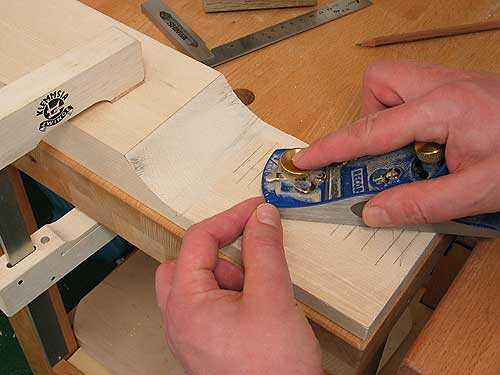
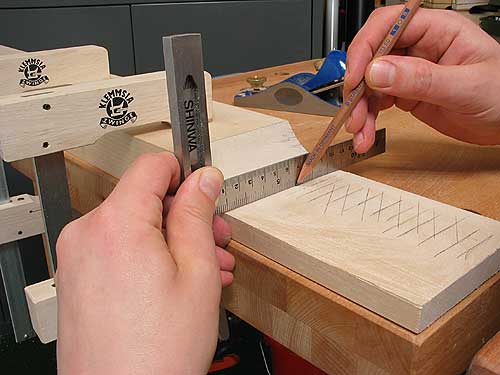
When the surface is almost smooth continue leveling on the back of
the peghead. Use a well-sharpened block plane and take off material
in circular motions. Check the flatness frequently by laying on a
square. Look for light gaps and mark all sections where no light
shines through with a pencil line. By moving the square to
different areas you'll get a good impression of where the high
spots are. Take them off with circular strokes of the plane. Repeat
the procedure until the lines can be drawn almost through.
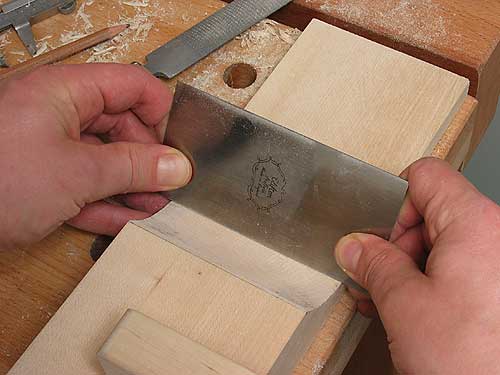
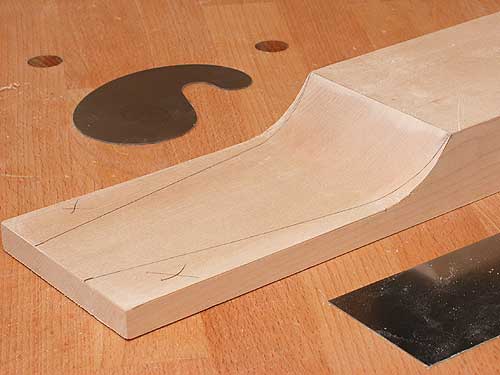
You can neglect the edges because they are in the area that will be
cut off. Measure 1-1/4" (30mm) from both sides on the top of
the peghead and mark the approximate peghead contour to get an
impression of where the important regions are. Pay attention to
keeping a uniform thickness and continue smoothing until you get
near the line marking the thickness of the peghead. At this stage
you will probably have a hump in the transition area, where the
flat part meets the rounded section. Depending on which section is
higher, you'll have to remove material from the flat or the
round part until the two sections blend into each other smoothly.
As a last step use a rectangular scraper and work the entire
surface, scraping with the grain until all tool marks have
dissapeared.
![]()
After smoothing I ended up with a uniform peghead thickness of
9/16" (14mm). It is okay if the peghead gradually becomes
thinner towards the end, but it doesn't look good if it gets
thicker.